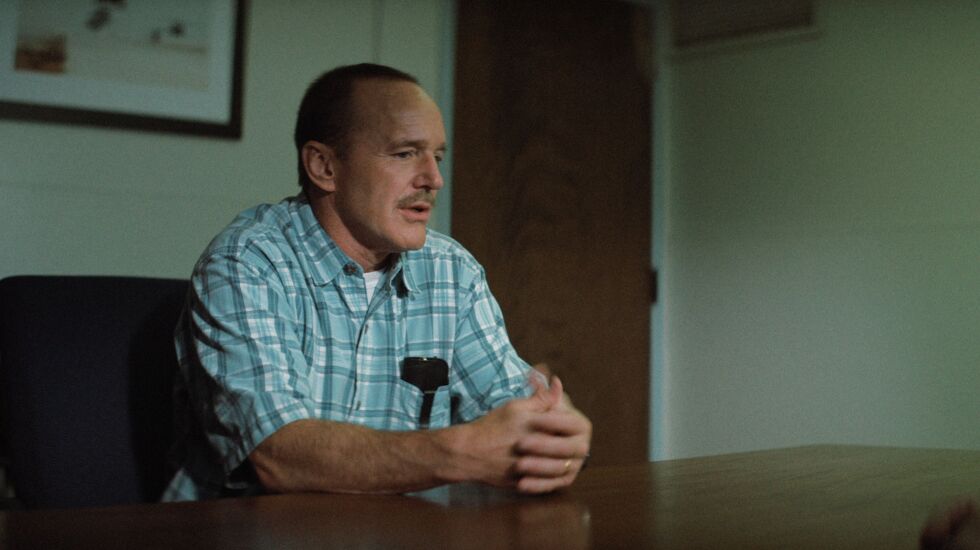
The acrid fumes of 9/11 were still smoldering above the World Trade Center site when a second wave of terrorism infiltrated America — this time coming via the U.S. mail. If you’re old enough to remember those chaotic days, weeks and months in the fall of 2001, you’ll recall how we were made aware of the terrifyingly dangerous and often lethal powers of anthrax spores, which were detected in a number of letters mailed to various news media headquarters and government offices, resulting in the deaths of five people and infections to at least 17 others.
These letters included such messages as “Death to America, Death to Israel, Allah is Great,” which had many believing a foreign enemy was once again attacking America. But as we’re reminded in the gripping Netflix documentary “The Anthrax Attacks,” the investigation soon turned to domestic terrorism, and a number of suspects emerged — but it would be years before the case was closed.
Writer-director Dan Krauss takes a creative risk by combining traditional non-fiction storytelling techniques with re-creations that go far beyond the usual shadowy-silhouette snippets. At times, “The Anthrax Attacks” is a straightforward as can be, featuring interviews with journalists and scientists, archival news footage and graphics guiding along through the timeline; on other occasions, Krauss shifts to pure docudrama and we’re watching something akin to Clint Eastwood’s “Richard Jewell” film, with the invaluable character actor Clark Gregg (best known as Agent Phil Coulson in the Marvel Universe) portraying Dr. Bruce Ivins, the real-life microbiologist who was eager to assist the FBI with its investigation and even offered a couple of names of possible offenders — only to become the lead suspect a few years down the road. It’s a risky move to toggle between the two approaches, but thanks to Gregg’s grounded performance and the fact his dialogue is based largely on actual interviews with Ivins and Ivins’ own writings, it works.
On Sept. 18, 2001, letters containing anthrax were mailed to the New York headquarters of ABC News, NBC News, CBS News and the New York Post, and to the tabloid publisher American Media Inc. in Boca Raton, Florida. Three weeks later, anthrax letters were sent to Democratic Sens. Tom Daschle of South Dakota and Patrick Leahy of Vermont. Panic ruled the day; anyone who worked in a post office, anyone who handled mail had legitimate worries about the contents of any random envelope. As we see in news footage from the time, a number of Americans were buying gas masks and stocking up on the antibiotic Cipro, which combats a variety of bacterial infections.
Says Paul Keim, an anthrax expert: “The thing that makes anthrax an exquisite biological weapon … is the spore form can exist for decades. … It has to kill in order to survive. It has to kill to complete its life cycle.” Former FBI agent Brad Garrett talks of how there was a major fear this was indeed the second wave of a terrorist attack — but the data study matched a strain of anthrax originating only in American laboratories. “The person we were pursuing was one of us,” says Keim.
Although the news media and elected officials were the recipients of the letters, “The Anthrax Attacks” reminds us it was postal workers who initially handled the material — and employees Joseph Curseen and Thomas Morris were killed by exposure to anthrax. (The recording of Morris’ 911 call is absolutely heartbreaking, as he talks of being short of breath and says, “I suspect that I might have been exposed to anthrax.”)
Parallels to the aforementioned Richard Jewell case are particularly striking when a biological weapons expert named Steven Hatfill becomes the focus of the FBI’s investigation and is the target of a two-year campaign of wiretaps, raids on his home, surveillance and intense public scrutiny. (We see a startling series of clips with many of the most high-profile news anchors of the time identifying Hatfill with the same term, over and over again: “a person of interest.”) Here’s the thing, though: Hatfill wasn’t the guy, and he was eventually exonerated, as the case grew ever colder. (Hatfill sued the government for infringement of privacy and received a $5.8 million settlement.)
In 2008, advancements in the science of analyzing genomes led to authorities tracing all of the collected anthrax samples to a single flask of RMR 1029 — a flask Dr. Bruce Ivins had created for his experiments. “The Anthrax Attacks” takes on the aspects of a thriller as we see Gregg as Ivins engaging in non-denial denials, while investigators wonder if his efforts to ostensibly help them for so long were part of an elaborate scheme of misdirection. With the investigation closing in on him but no charges yet filed, Ivins committed suicide on July 29, 2008. The FBI closed the case and destroyed the evidence. The case against Ivins seems solid, but there are those who maintain it wasn’t him. We’ll never know for sure.







